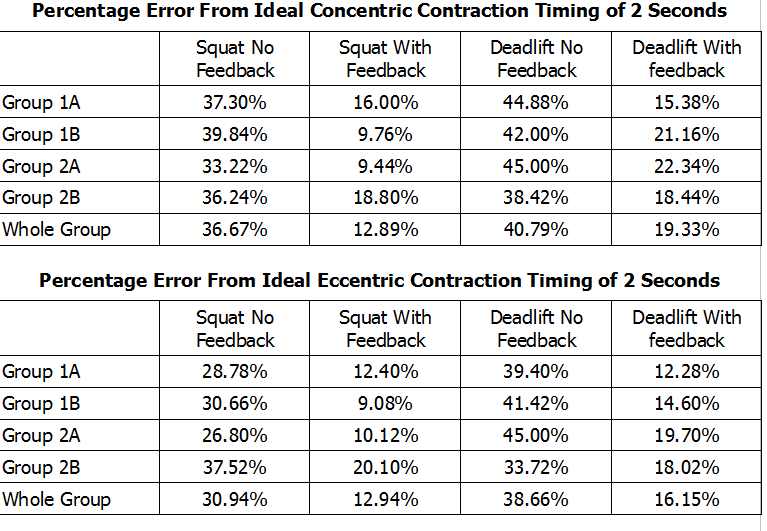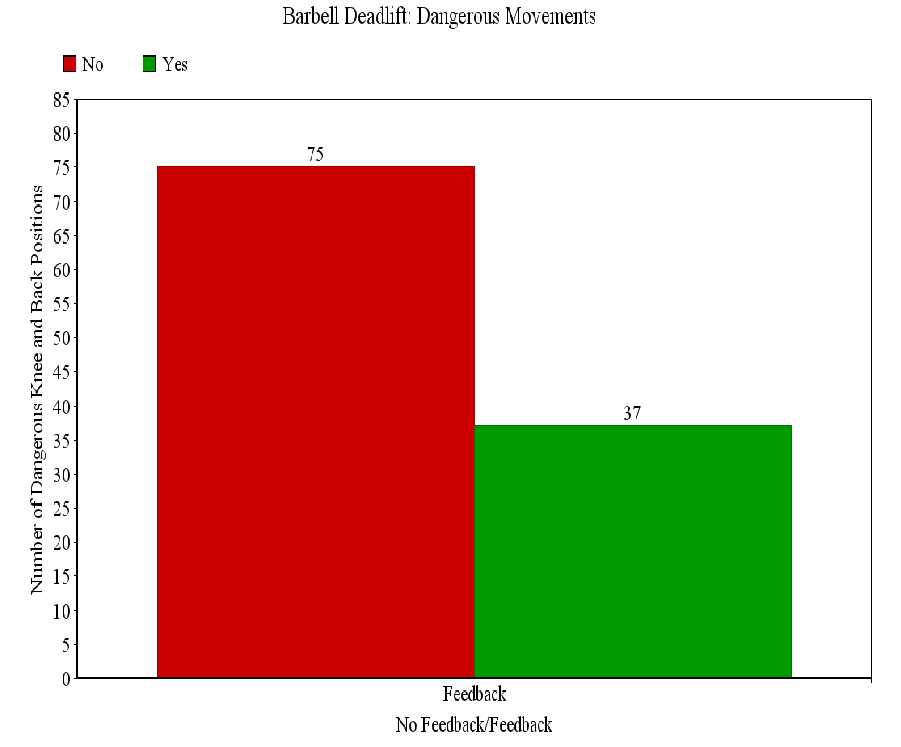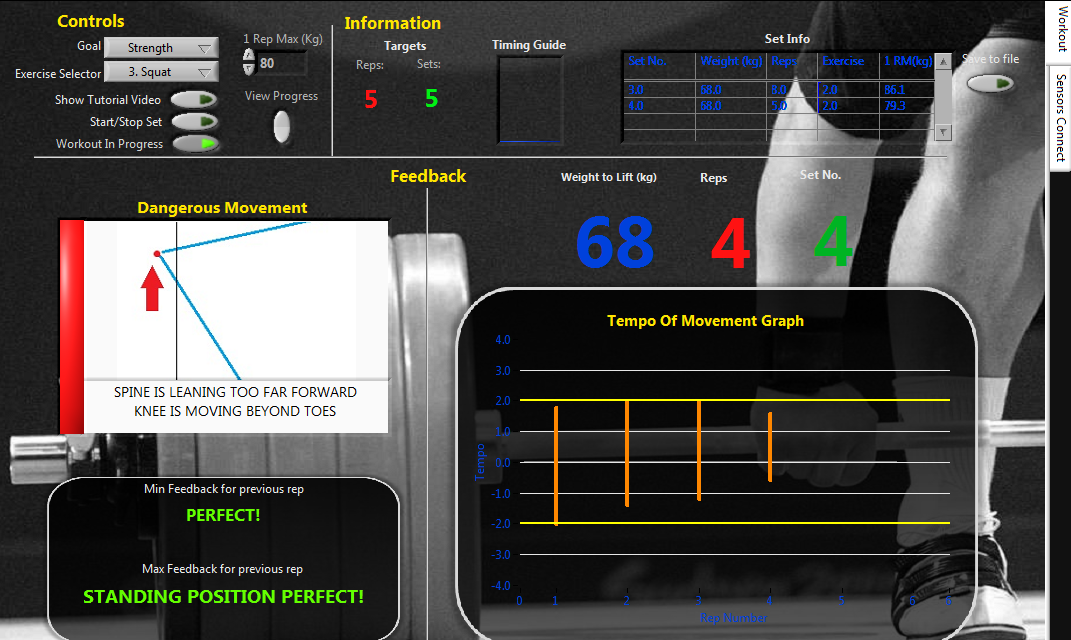- Document History
- Subscribe to RSS Feed
- Mark as New
- Mark as Read
- Bookmark
- Subscribe
- Printer Friendly Page
- Report to a Moderator
- Subscribe to RSS Feed
- Mark as New
- Mark as Read
- Bookmark
- Subscribe
- Printer Friendly Page
- Report to a Moderator
Design of a Resistance Training Biofeedback System and 'Virtual Strength and Conditioning Trainer' Application
Contact Information
University: National University of Ireland, Galway
Team Members (with year of graduation): Martin O'Reilly, Sports and Exercise Engineering, Class of 2013
Academic Supervisor: Prof. Gearóid ÓLaighin, Head of Elecitrical & Electronic Engineering NUI Galway
Academic Co-Supervisor: Dr. John Breslin, NUI Galway
Industry Supervisor: Dr. Karol O'Donovan, Shimmer Research
Email Address: moreilly91@gmail.com
Submission Language: English (UK)
Project Information
Title: Design of a Resistance Training Biofeedback System and 'Virtual Strength and Conditioning Trainer' Application
Description: This project combines National Instruments and miniature body-worn sensor technology to monitor and provide biofeedback on a user's resistance training technique. The application acts as the user's personal traner, guiding the user to train more optimally towards their specific goal and minimising their risk of injury by ensuring correct technique is adhered to.
Products
- NI LabVIEW
- 4X Shimmer 9DOF Sensors (accelerometer, gyroscope, magnetometer and bluetooth)
- Shimmer LabVIEW Library
The Challenge
Participation in resistance exercise training programmes can result in improvements in athletic performance and general health, as well as reduced risk of injury during sport. As such, resistance training is an integral part of preparation for sport. These benefits also extend to the wider population, with evidence of higher quality of life in elderly people who have practised appropriate resistance training throughout their lives. However, a lack of training knowledge and inadequate adherence to good form and technique during resistance exercise training can result in biomechanical inefficiencies leading to reduced training effectiveness or even increased risk of injury. To date, people undertaking resistance training programmes have had to rely on self-observation and memory to adhere to correct exercise technique. Recent developments in wearable sensor technologies and persuasive interfaces have the potential to address this issue and enhance implementation of resistance exercise training for athletes.
The Solution
A user wears 4 Shimmer 9DOF sensors which stream to a LabVIEW application using Bluetooth and COM port streaming. The application acts as the user's personal strength and conditioning trainer guiding the user through a goal-specific exercise routine and providing the user with both real-time feedback on their training technique and long-term feedback and motivation regarding their progress towards their training goal. The application also guides the user on how exactly to complete an exercise. A key advantage of using the sensors is that unlike video/kinect analysis of exercising, the system is not restricted to a particular environment and can be used anywhere from a person's garage to a state of the art gym.
This solution required fastidious multi-discilplinary work to ensure an accurate, high performance system with real-time capabilties was engineered which also incorporated expert strength and conditioning knowledge embedded in the application. At the core of the many algorithms in the application is the signal analysis and complex 3D joint angle calculations using the inertial sensor signals. Once this had been accurately implemented each exercise analysis algorithm had to be developed. The development of each algorithm could be seen as a mini-project incorporating in gym data collection, data analysis, algorithm prototyping, testing and finally algorithm evaluation. Indeed, an overall system evaluation on ten elite athletes and ten lesser experienced gym-goers showed very noticeable inprovements in many aspects of their training when using the system as shown in the following graphs and tables.

Fig. 1: Tables showing the user's percentage error in timing with and without system use. Group 1 are ten lesser experienced gym-goers and group 2 are ten elite athletes. 'A' refers to users who received no feedback first in testing and 'B' refers to users who received system feedback first in testing.

Fig. 2: The bar graph above shows the reduction in the amount of dangerous movements (spinal posture) which occurred over 200 repetitions of the barbell deadlift exercise across 20 test subjects. Similar reductions were also observed for the back squat and bench press exercises.
The video below gives an overall walkthrough of the system in use (it is reccommended to watch the video with sound, in HD and full-screen):
LabVIEW served as the perfect software development to reach a large variety of project milestones. I used LabVIEW's libraries and the Shimmer LabVIEW library to design my program. I found the GUI method of programming very intuitive and it allowed me to efficiently develop, test, edit and evaluate exercise analysis algorithms. Such algorithms include:
- Computing 2D and 3D body segment inclination and joint angles using the accelrometer, gyroscope and magnetometer data. The LabVIEW filters and array VIs proved exceptionally effective in this area.
- Recording the amount of reps and sets a user completes of each exercise as well as giving them goal-specific targets for these parameters and others such as what weight they should lift.
- Monitoring a user's tempo of movement and timing of concentric and eccentric muscular contractions whilst also providing goal-specific guidance on their tempo of movement.
- Providing the user with feedback on their exact range of motion completed for each critical body segment over each repetition of an exercise.
- Detecting dangerous movements completed by the user e.g. dangerous spinal positioning.
- Providing long-term feedback to the user to show their increase in strength over time.
- Providing goal-specific guidance to the user.
- Providing the user with a rep by rep summary of each workout.
- Allowing the user to view tutorial videos in YouTube.
I also found LabVIEW very useful in developing an attractive user interface. I combined front panel objects and PNG images to develop a GUI which the user should be attracted to use and receive feedback from time and time again. This was to try and mimic the rapport a real personal trainer builds up with a client. LabVIEW was also very effective at providing real-time visual feedback to the user. It was also possible to continuously improve this feedback to make it most effective to the user. An Image of the biofeedback tab of the application's front panel can be seen below.

Fig. 3: The biofeedback tab of the application's front panel. Throughout the project design process, a key focus was creating feedback that was appealing and could intuitively be understood by the user. Feedback is an ambiguous topic as often different people will interpret the same stimulus in varying manners. The main features of the feedback are:
-Large Numbers showing the weight to lift, the current rep. count and the current set count (Centre-Right).
-Visual images highlighting dangerous movements which are very easy to interpret quickly (Centre-Left).
-Large, colour-coded text giving feedback on the users range of motion (Bottom-Left).
-Timing Guide and target reps and sets (Upper-Centre).
-Tempo of movement feedback graph: yellow lines show the ideal timing which changes depending on the user’s goal and the orange lines show their upwards (positive) and downwards (negative) tempo of movement (Bottom-Right)
-Table of Summary: shows the set number, total reps, exercise type and estimated one rep. max. for each exercise completed by the user (Upper-Right).
I would highly recommend LabVIEW for use in any project that integrates hardware with computers. The more you use LabVIEW the more you grow to appreciate and utilise its vast array of possibilities. I have only been using LabVIEW for just over a year and it enabled me to produce a final year project of a standard far beyond the level I could have reached with other programming languages.
The project development time was between September 2012 and March 2013. I have not attached all the LabVIEW VI code in order to protect novel aspects of my exercise analysis algorithms but a screenshot of the VI hierarchy is attached to demonstrate the complexity and the layers of the system code. I would consider the application fully functional, verified by the system evaluation on 20 subjects. However, if given the opportunity to further develop this project I would like to add more exercises and user-specific goals and further optimise the feedback methods to the user so they exeperience maximum benefit from system use.
- Mark as Read
- Mark as New
- Bookmark
- Permalink
- Report to a Moderator
Comprehensive and innovative biofeedback system. It's interface focuses on usability making it accessible to any user. Will improve the quality of many peoples lives. Excellent project!
- Mark as Read
- Mark as New
- Bookmark
- Permalink
- Report to a Moderator
This looks like an awesome and very applicable project. Greetings from Serbia!![]()
- Mark as Read
- Mark as New
- Bookmark
- Permalink
- Report to a Moderator
This project looks like the future of resistance training. the type of emerging technology we at Sporting Insight love to see.
